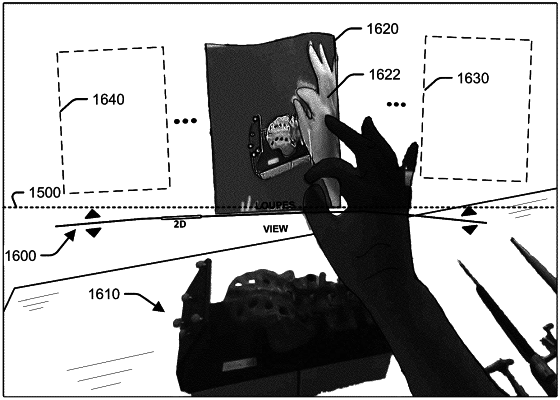| CPC A61B 90/36 (2016.02) [A61B 34/37 (2016.02); A61B 2017/00115 (2013.01); A61B 2017/00207 (2013.01); A61B 2034/105 (2016.02); A61B 2034/107 (2016.02); A61B 2034/2057 (2016.02); A61B 2034/252 (2016.02); A61B 90/361 (2016.02); A61B 2090/365 (2016.02); A61B 2090/371 (2016.02); A61B 2090/372 (2016.02); A61B 2090/502 (2016.02)] | 18 Claims |

|
1. A surgical system comprising:
an augmented reality (AR) headset including a display screen configured to:
display images for viewing by a user and to allow ambient light to pass therethrough for viewing an anatomical structure by the user, and
a tracking system configured to determine a pose of an anatomical structure and a pose of a surgical tool;
at least one navigation controller configured to store a target pose for the surgical tool based on a surgical plan defining where a surgical procedure is to be performed using the surgical tool on the anatomical structure and based on the pose of the anatomical structure, and
at least one AR headset controller operatively connected to the at least one navigation controller and to the display screen, the at least one AR headset controller configured to simultaneously display a graphical representation of the anatomical structure at a position away from the physical anatomical structure, a graphical representation of the pose of the surgical tool on the displayed graphical representation of the anatomical structure and a graphical representation of the target pose for the surgical tool on the displayed graphical representation of the anatomical structure, the displayed graphical representation of the target pose being fixed relative to the graphical representation of the anatomical structure while the graphical representation of the pose of the surgical tool is updated on the display screen as the user manipulates the surgical tool;
wherein the display screen is configured with at least two laterally extending bands, wherein an upper one of the at least two laterally extending bands has a lower light transmissivity than a lower one of the at least two laterally extending bands to reduce the amount of incident ambient light passing therethrough for viewing by the user.
|